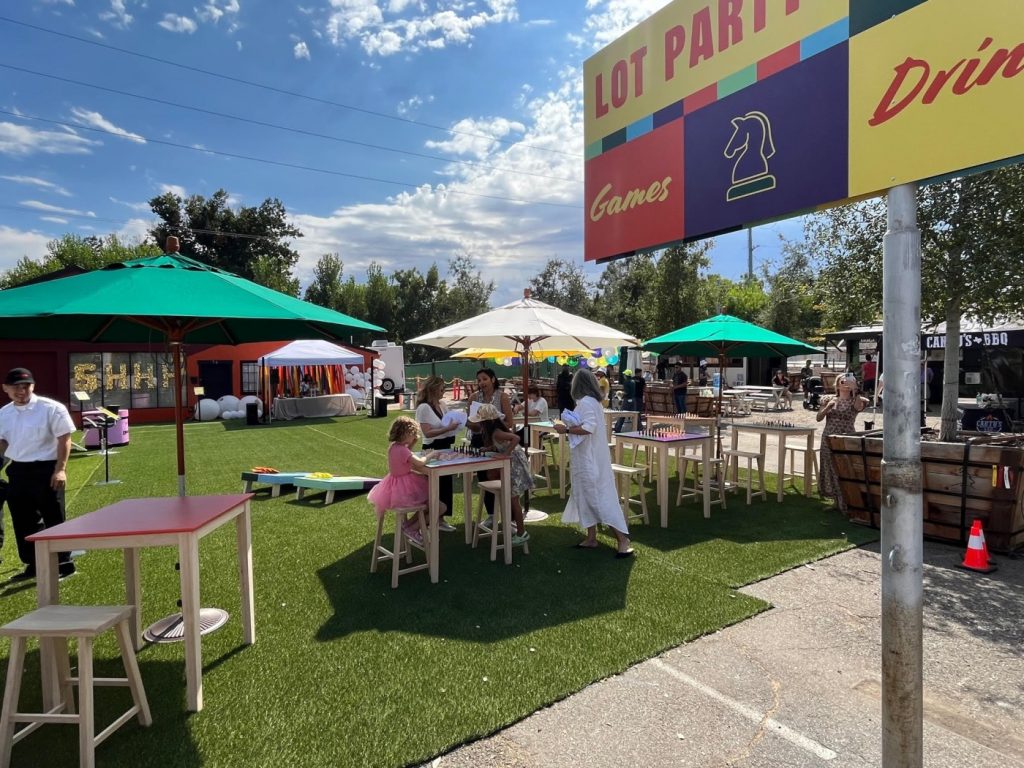Editor’s Note: This article was written for Mosaic Vision, an independent journalism training program for high school students who report and photograph stories under the guidance of professional journalists.
Nearly a year after a pause in development, there are signs Google is proceeding with its massive project next to San Jose’s downtown. For some local businesses and residents, construction cannot come soon enough.
Last year pessimism grew about Google’s mixed-use campus plan to develop 80 acres of new office buildings, housing units, and retail space around Diridon Station, with word the tech giant was reassessing the project.
But in September, a Google official met with residents, in February demolition work resumed in the project area and in early June the company indicated it was weighing an affordable housing project for the site, which may indicate the project dubbed Downtown West will happen.
With it rides the hopes of downtown businesses, which expect to see thousands of new workers and residents spending their dollars at stores, restaurants, and theaters.
“Any extra population density helps with business,” said Eric Johnson, the owner of Recycle Bookstore’s downtown location, just blocks from the planned Downtown West. “The campus would probably attract more high-quality restaurants and businesses on The Alameda, which would create more foot traffic. The more people coming close to your location, the better it is.”
Many downtown residents are eager to see more businesses open. Sophia Copeland, a teenager who lives near downtown, believes more local businesses will boost downtown’s offerings for students.
“Downtown has much to offer with the Tech Museum, San Jose Museum of Art, MACLA, and more,” Copeland said. “However, the lack of shops . . . can be disappointing sometimes. The area would really improve if it had more shops, preferably local businesses, and activities for students and teens to get involved.”
In a statement, Google provided no new updates on the development. “We are taking a measured approach to ensure our real estate investments meet the current and future needs of our hybrid workforce, business and communities,” a Google spokesperson said.
Plans for Downtown West were announced by Google in 2019, and the project was approved by the San Jose City Council in 2021. Since then, Google has been razing vacated buildings, preparing lots for new uses.
The plans for Downtown West, include 7.3 million square feet of offices and 500,000 square feet of retail space that would include shops and restaurants. The campus is expected to create 20,000 to 25,000 new jobs, as previously reported by The Mercury News.
The development would also construct 4,000 residential units and dedicate 25% of them to low-cost affordable housing. In addition, 15 acres of public parks would be created.
The properties are strategically located around Diridon Station, a hub for Caltrain, to promote easy access to the Downtown West campus. BART and high-speed rail service are also on the drawing boards for the station.
The project has faced hurdles. Prior to the resumption of ground preparation work in February, it had been indefinitely delayed since April 2023, when the company paused construction in the midst of cost-cutting measures. In the meantime, Google adjusted its plans, adding more office space.
Councilmember Omar Torres, whose district includes downtown, believes the delay has been detrimental to residents and merchants who are bearing the upheaval caused by the massive development.
“Google’s promises have affected those in under-resourced communities, where real estate developers and corporate business owners have used Google to drive up prices, negatively affecting our most vulnerable neighborhoods,” Torres said.
Related Articles
New San Jose cafe combines coffee and kitties waiting for adoption
San Jose teen entrepreneurs find business is booming
One South Bay school flouts California recycling law — but few complain
High school student athletes: balancing several games
Social media fuels youth passions over Palestine
“For every day that Google doesn’t build, that’s another delay in the formation of a new construction job, food service shift, and dollars not going back into the community.”
Despite the suspension of work, Google has delivered on its promise to contribute millions of dollars to homeless services, job opportunities for residents, and rent assistance. It has paid $7.5 million in community benefits to the city, and has also agreed to give another $15 million no later than 120 days after construction starts on the first office buildings, according to a city memo.
Community activists are keeping a close eye on how this money will be distributed and when the rest of it arrives.
“Community benefits are almost always delayed,’’ said Elizabeth Gonzalez, an organizer with Silicon Valley De-Bug, a community advocacy organization. “It really falls back on the city and what they allow Google to do.’’
Ella Polak is a rising senior at Leland High School in San Jose.


